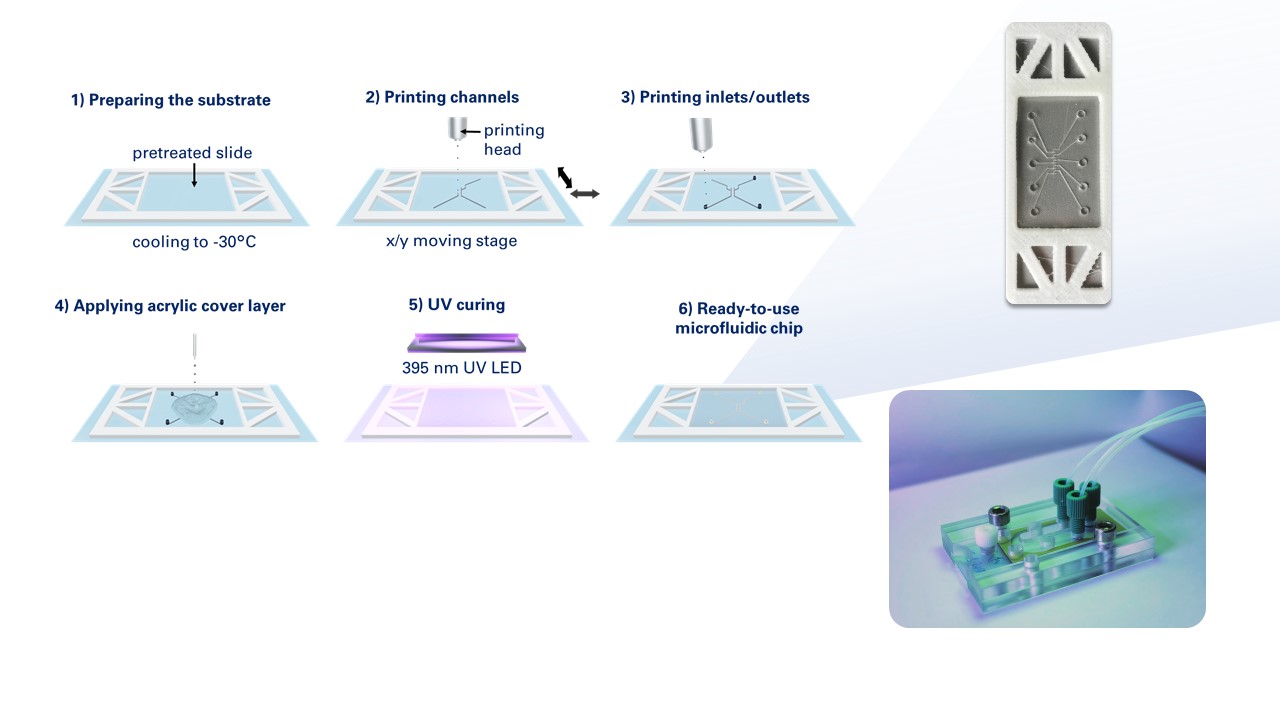New methods and polymer materials for the fabrication of functionalized micro-structured and microfluidic systems and components are essential for the development of miniaturized devices which allow for point-of-care-testing and decentralized medical treatments in the future. UV-imprint technologies and drop-on-demand printing (cryo-printing) are tools, which are developed and combined for these purposes at the level of prototyping and volume production. Moreover, the generation of adapted components, like electrode materials, adsorptive phases, molecular switches, and biomaterials and their integration in miniaturized devices is a current research topic.
Expertise
- Development of microfluidic prototypes using the drop-on-demand printing technology
- UV imprint technologies using roll-to-roll and plate-to-plate processes
- Integration of functionalized porous gels into microfluidic devices using free radical polymerization reactions, hybrid composite materials, stimuli-responsive materials, peptide-based nanomaterials
- Radiation chemical surface modification using molecular templates
Highlights
Interconnected electrocatalytic Pt-metal networks by plasma treatment of nanoparticle-peptide fibril assemblies
J. Bandak, J. Petzold, H. Hatahet, A. Prager, B. Kersting, Ch. Elsner, B. Abel
RSC Advances, 9 (10) (2019) 5558–5569
https://doi.org/10.1039/C8RA08201DPeptide nanofibrils, which are formed spontaneously by self-assembly of polypeptide monomers, are interesting affinity and templating materials, for instance for the adherence of nanoobjects like particles and viruses. In the case of microfluidic systems their spatial resolved surface immobilization is intended. Peptide-nanofibrils were used as templating materials for the attachment of Pt-nanoparticles. After plasma degradation of the templates electrocatalytic Pt-metal networks were obtained.
Growth, Polymorphism, and Spatially Controlled Surface Immobilization of Biotinylated Variants of IAPP21-27 Fibrils
T. John, J. Bandak, N. Sarveson, C. Hackl, H. J. Risselada, A. Prager, C. Elsner, B. Abel
Biomacromolecules 21 (2) (2020) 783–792
https://doi.org/10.1021/acs.biomac.9b01466Peptide nanofibrils, which are formed spontaneously by self-assembly of polypeptide monomers, are interesting affinity and templating materials, for instance for the adherence of nanoobjects like particles and viruses. In the case of microfluidic systems their spatial resolved surface immobilization is intended. The article presents studies according the influence of modifications in the sequence of the polypeptides on the formation and morphology of the fibrils and discusses their properties based on molecular relationships using molecular dynamics simulations.

